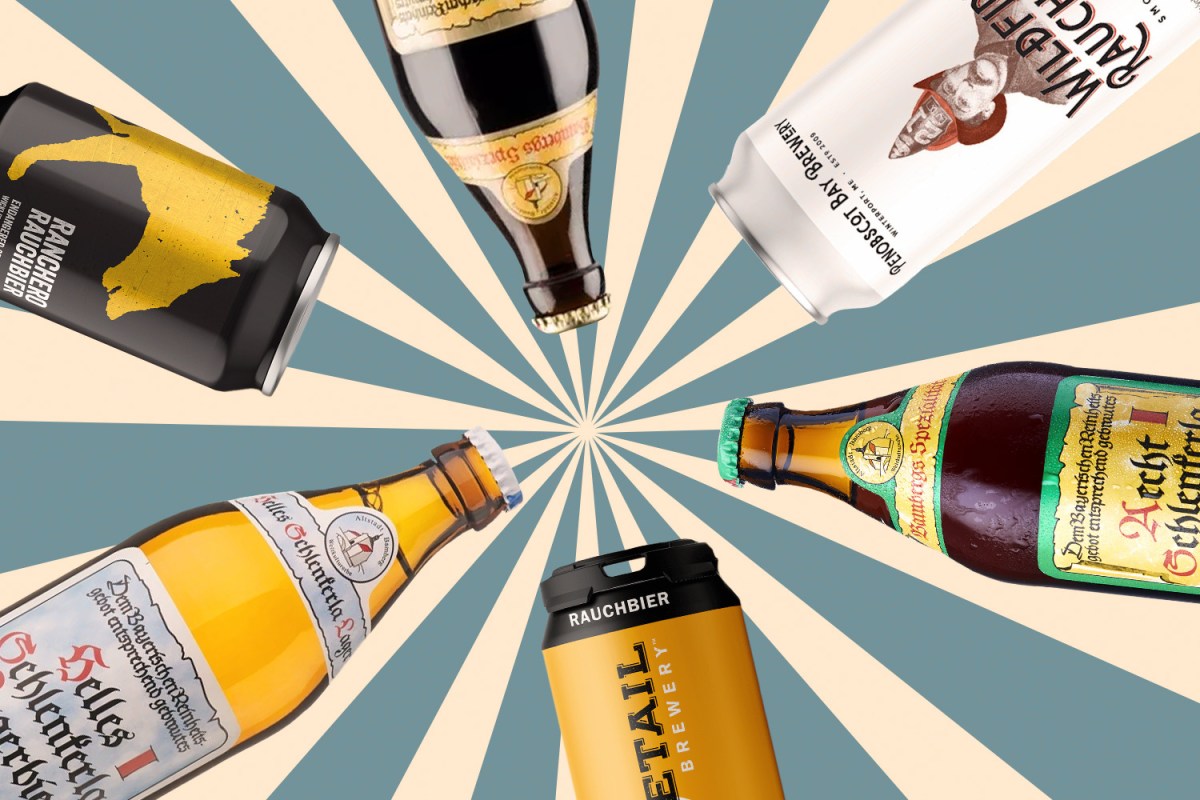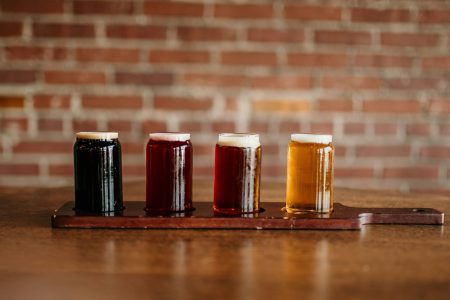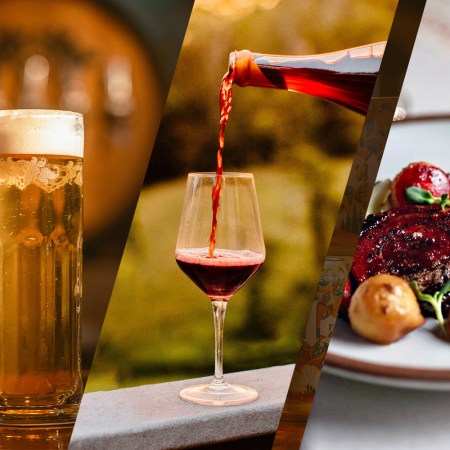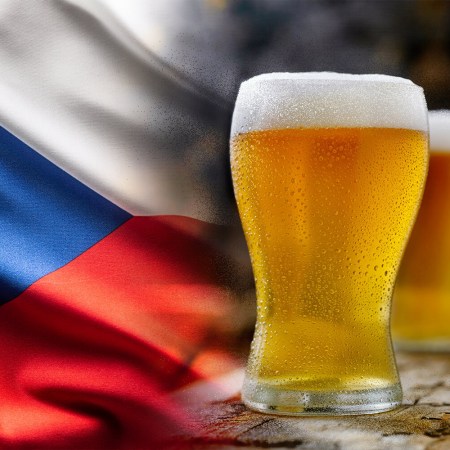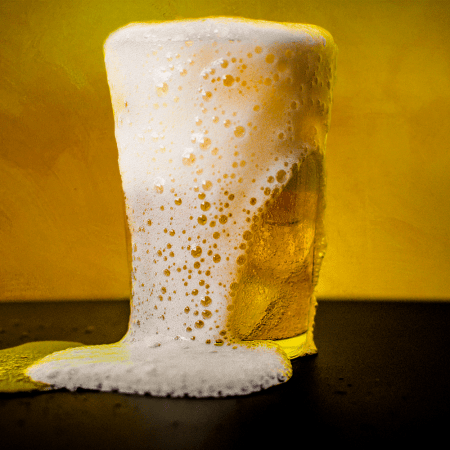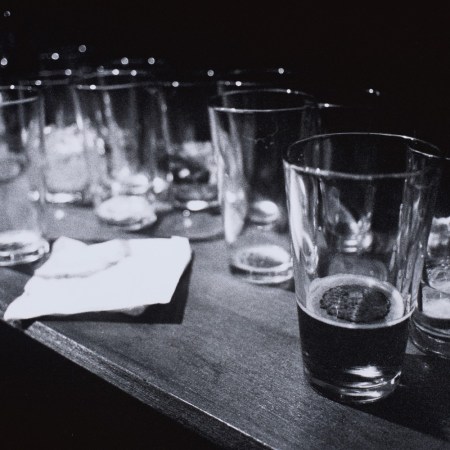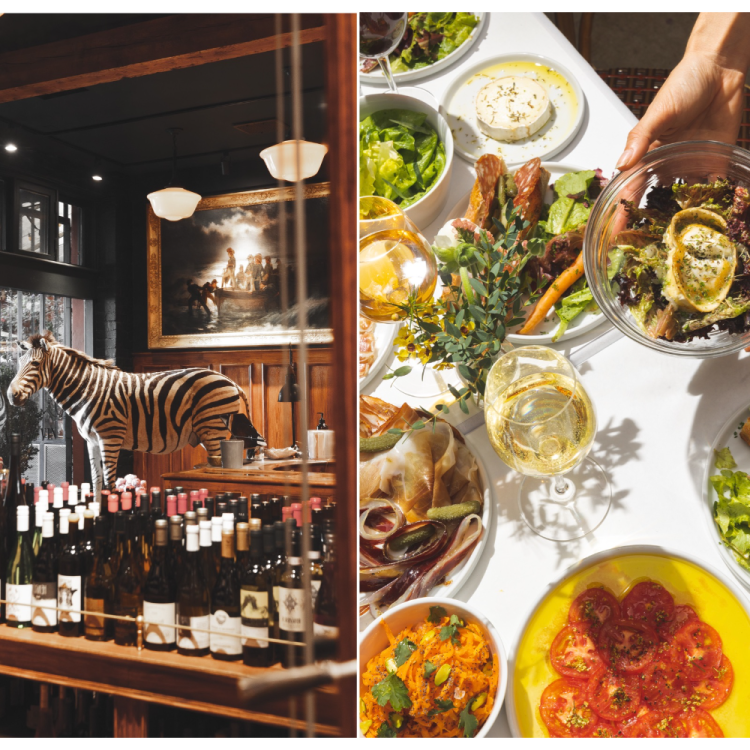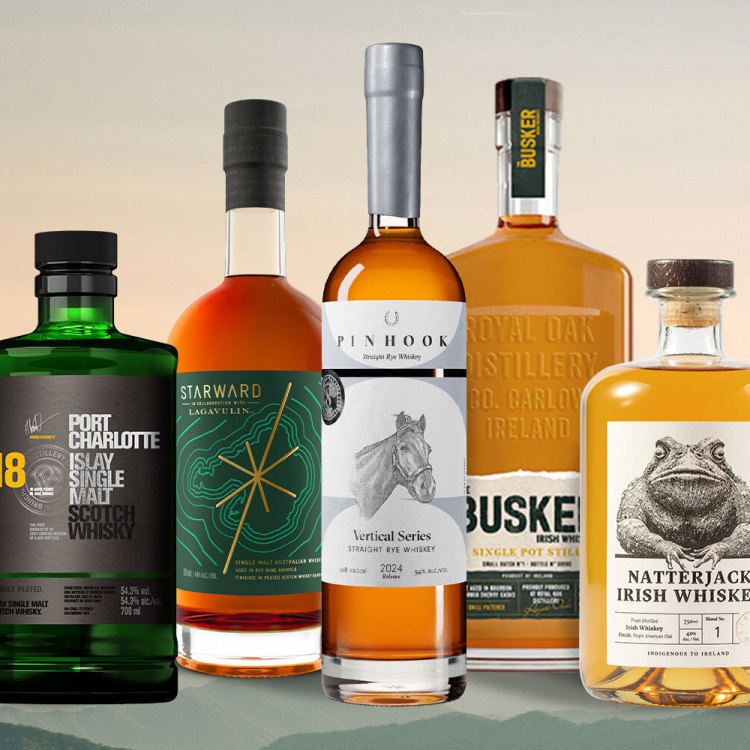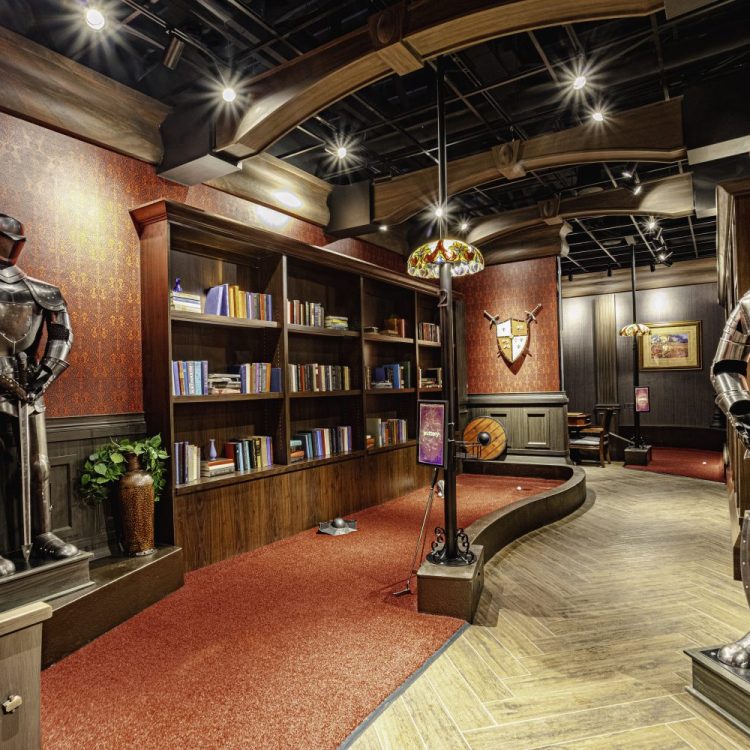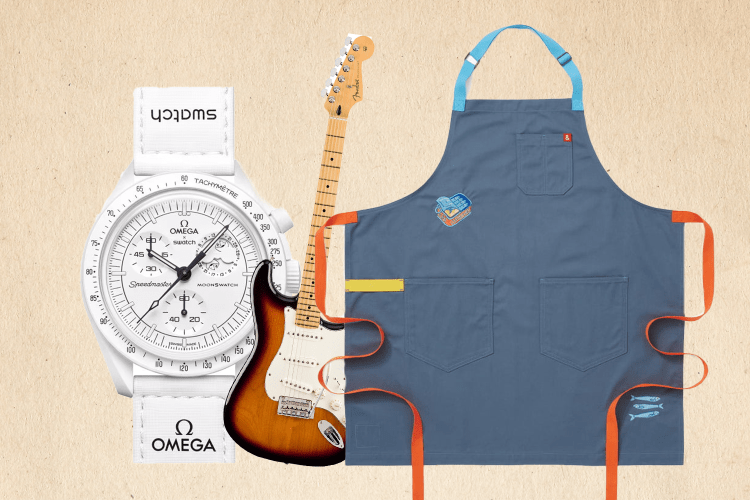Witness two people try their first smoked beer and you could hear them utter the same exact words, but whether they love of loathe what they’re drinking lies in the delivery. Is it, “Mmm, this tastes like bacon!”? Or, “Ugh, this tastes like bacon!”? While it’s unlikely to break out past niche status, one of beer’s oldest traditions is popping up in more taprooms, and it’s time to decide if you’re Team Hell Yes or Team No Way on smoked beer.
What Is Smoked Beer?
You may recognize smoked beer by the German term “rauchbier,” which translates literally to “smoke beer.” As a style, rauchbier refers to smoked lager, specifically smoked märzen; examples from Brauerei Spezial and Schlenkerla, in Bamberg, Germany, are the most foundational. But nearly any style of beer can be smoked, and in fact, it’s only been a couple of centuries that all beer wasn’t at least a little smoked by nature of its production.
Smoked beer is made with malt that’s been dried over a wood-burning fire. Before 1818, when Daniel Wheeler invented the drum kiln and changed the way malt is heated and dried, this is just how brewers prepared their grain. Post-1818, brewers didn’t need to factor in that smoke flavor, and many were excited to zero in on the characteristics of the grain itself. But in places like Bamberg, brewers wanted to herald tradition, recognizing the unique profile smoke brings to their beer.
“Smoking creates a Maillard reaction which gives food and drink that hard-to-translate taste of umami, and that makes it instantly craveable and delicious,” says Jenny Pfafflin on why smoked beer is special. Pfafflin is a brewer and creative manager at Chicago’s Dovetail Brewery, known for its smoked beers. “I think a little of it is primordial; for a long time, smoking was a way to preserve foods, and for even longer, it was a way we heated and cooked foods. All of this imparted flavor and aroma. It’s why some of us long for smoked cheeses, smoked fish, Texas brisket, Scotches and mezcals.”
Today, American craft brewers are throwing their hats into the ring alongside the centuries-old smoked-beer legacies of Bamberg and other parts of Germany as well as places like Poland. Rauchbier from Spezial or Schlenkerla is the best introduction to the world of smoked beers, but there’s plenty of exploring to do from there.
What Kinds of Beer Can Be Smoked Beer?
Open since 2016, Dovetail introduces American drinkers to the different expressions smoked beer can take. Variations in smoked beer come naturally from beer-style differences, but also crucially from the malt — not just the type used, which helps inform the style, but over what kind of wood it was smoked. Brewers can choose different malts smoked over different woods, and tinker with what percentages of their grain bill will be this smoked malt in order to determine intensity. Dovetail’s rauchbier is made with 95% Beechwood-smoked barley malt plus a “wee bit of chocolate malt,” Pfafflin says. Their rauchdoppelbock uses the same bill, just with more malt to boost the ABV — doppelbocks are rich, malty lagers ranging from 7-10%. They brew a grodziskie, a historical low-alcohol smoked wheat beer from Poland, with 100% oak-smoked wheat malt. Interestingly, their smoked helles lager does not employ smoked malt. “We use the yeast slurry from the rauchdoppelbock and enough of those smoke-derived phenols make it into the finished helles to impart that gentle smokiness,” Pfafflin explains.
In Austin, Texas stands another brewery worthy of a pilgrimage for any smoked beer enthusiast. Live Oak Brewing has been embracing traditional European lagers since 1997, and their repertoire includes a rauchbier; a grodziskie; a smocked black lager, or schwarzbier; a smoked leichtbier, or German light lager; and a smoked doppelblock; among others. Referencing the malt they source from a brewery in Poland who contracts it from a Czech maltster, as well as collaborations they’ve done with breweries sourcing their smoked malt from small maltsters in places like North Carolina, head brewer Dusan Kwiatkowski says there’s an element of terroir to smoked beer. Malt gets smoked on the wood available local to maltsters, and this shapes the resulting beers.
Fox Farm Brewery is another haven of traditional European styles in Salem, Connecticut, and, like Kwiatkowski, cofounder and brewer Zack Adams has worked across a range of different smoke profiles from different malt sources. Their smoked lager The Camp is inspired by quintessential Bamberg rauchbiers, Adams says. “The characterful malts in [The Camp’s] grist are from Weyermann Specialty Malts in Bamberg, namely their Beech Smoked Barley. It’s an unmistakable type of smoke malt that is ideal for brewing an example of those beers, but we’ve [also] turned to our local maltster, Thrall Family Malt, for custom smoked malt using other species of wood in beers where we opt to break from tradition a bit.”
In Brooklyn, New York, Wild East Brewing has brewed three “notable” smoked beers, says cofounder and head of brewing Brett Taylor, and the trio represents a balance of tradition and creativity. Their grodziskie, a collaboration with Wayward Lane Brewing, was only 2.7% in alcohol but packed a smoky punch, employing 100% oak-smoked malt from New York Craft Malt. Taylor’s favorite Wild East smoked beer was called Decadent and Depraved, made for the anniversary celebration of a nearby beer bar. It was brewed in the style of a Munich dunkel, with characteristic toastiness and a hint of sweetness complemented perfectly by beechwood-smoked malt. The brewery’s most unique smoked beer, however, worked as a gateway for new smoked-beer drinkers. Windrush was a collaboration with then-Wild East brewer Robyn G. Weise, who went on to build a UK-based brand around the beer. It was a smoked helles lager, using oak-smoked malt from Germany and incorporating Jamaican jerk spices. Taylor says people were interested in the spices and the beer’s strong culinary connection.
Wild East isn’t the only brewery to see a classic style like the grodziskie as something to have fun with. In Amesbury, Massachusetts, Barewolf Brewing brews one of these Polish wheat ales, calling it Smoke Wheat Everyday. Cofounder and brewer Stevie Bareford says the team likes having a grodziskie on offer because not only is it what they themselves want to drink, but because it’s a compelling option for patrons, who want to know, “‘How smoky will it be?’ How does smoke get into beer?’ ‘How the hell do you pronounce it?’”
Why Breweries Are Saying No to Beer Flights
They’re always happy to pour you a sample to taste, but more and more brewers are refusing to sell flightsWhat Kinds of Beer Can’t Be Smoked Beer?
As the presence of smoked beer grows in American craft taprooms, American brewers are bound to apply the same approach they have to nearly every other style: innovation. For all of the brewers crafting painstaking homages to traditional German and Polish styles, there will be others trying to find styles that have never been smoked before.
“There’s a lot of experimentation in the space,” says John Holl, editor of All About Beer and host of the Drink Beer, Think Beer podcast, which has a running series called This Week in Rauchbier. “It’s great seeing brewers come up with new ways to incorporate smoke into their beers. One standout as a bourbon barrel-aged grodziskie that I had last year.” So, are there limits? Should some beers never be smoked?
“Honestly, I think you could smoke just about any beer, because in my view, smoke is kind of a seasoning you can play with,” Pfafflin says. “Like, smoked sours? Sure, sounds weird, but the Germans have been doing it forever with [smoked sour wheat beer] Lichtenhainer.”
“The common perception is that smoke does not play well with many other flavors, but I’m not sure that’s true,” Adams says. “Firm bitterness or hop flavor/aroma is widely cited as clashing with smoke, but grodziskie is hoppy and delicious.”
Taylor, too, cites a wide array of beers he’s had smoked iterations of, like saisons and stouts. Indeed, while smoked lagers and wheat ales remain most common presently, there’s delicious precedent for smoked sours. Dovetail has brewed a smoked kriek before, a blend of their rauchbier and spontaneously fermented cherry ale, and has also matured their rauchbier with a Flanders culture, creating what Pfafflin calls “tasty in the same way vinegar-based Carolina-style BBQ sauce is also tasty.”
“You could try anything, and anything could be done, as long as you do it well,” Taylor says. Brewers agree that a successful smoked beer hinges not on style, but on making sure you’re choosing the right malt and smoke profile for that style, and on balance — whether the smoke character is intense, subtle, or somewhere in between, it should work in harmony with the flavors of the malt and hops. Essentially, the “background beer” has to be well executed, Kwiatkowski says. “The smoke flavor really jumps out at first, but the beer has to have a good fermentation and be solid before that factors in.”
As long as the ingredients are well considered and the beer is well brewed, smoked beer is a chance for brewers to “throw caution to the wind,” according to Bareford. “People are either gonna love it or hate it, so pandering really has no place in a smoked beer!” If a brewer wants a super smoky beer, they may as well go for it.
Smoked Beer’s Polarizing Personality
“Maybe I’m overly sensitive to it, but they taste like drinking a bottle of liquid smoke to me,” says Amanda Beckett, an Oklahoma-based beer enthusiast and content creator. When asked about smoked beer’s love-it-or-hate-it vibe, Pfafflin mentions “the Bamberg rules,” which “require that you start enjoying rauchbier after you’ve had your third one.” Trying thee different smoked beers can shape die-hard enthusiasts, but it can also validate the dislike felt by others. Beckett says she’s tried a dozen or so smoked beers, but the smoke character is simply always too overwhelming.
“Rauchbier is perhaps the most polarizing style in beer, and I get it,” Holl says. “Not everyone appreciates the smell of smoke, even in a culinary sense, like barbecue. But, that’s a good place to start the descriptor of rauchbier. The smoke is not like from a house fire, but more gentle, subtle and savory.”
For imbibers building their rauchbier appreciation with each new variation they try, a wondrous new category awaits. “Smoke flavors in a rauchbier throw us a sensory curveball that is both provocative and comforting,” says beer writer and educator David Nilsen. Smoked beer also strikes a key balance that explains its current growing interest in American craft beer. “In beer, what is old will become new again, and rauchbier is a great example,” Nilsen says. “It’s profoundly traditional, but in our modern market, it’s also new and weird, allowing fans to both celebrate history and enjoy unexpected flavors in the same glass.”
For new and long-standing, there are plenty of ways to engage with smoked beer. Food pairings are fertile ground for creativity. “Smoke flavors in a beer tend to cast a wide net to make these beers very versatile at the table,” Nilsen explains. “A standard märzen rauchbier can be an easy beer to keep in the fridge to provide a simple pairing for…a wide range of grilled or roasted meats, savory soups, or charcuterie and cheese trays.” Some of his favorite pairings include MORO Sottocenere al Tartufo cheese with smoked helles; 90-100% cacao dark craft chocolate with any intensely smoky beer; and pepita mole chicken with just about any rauchbier.
Smoked-beer fans can also flock to celebrations dedicated entirely to the category. Dovetail and Live Oak host popular events, both in January: Thank You for Smoking and Rauchfest, respectively. They can listen to podcasts like This Week in Rauchbier, and spread the smoked-beer love on social media with campaigns like Dovetail’s National Rauchbier Month (a.k.a. October). In fact, when it comes to social media, even smoked-beer haters can get in on the fun, as the for-or-against discussion is an effective way for everyone to geek out over a beer tradition.
“I think light-hearted debates like this challenge people to try new things,” Beckett says. “They also help us as beer drinkers to express our thoughts critically and develop our beer vocabulary.”
Join America's Fastest Growing Spirits Newsletter THE SPILL. Unlock all the reviews, recipes and revelry — and get 15% off award-winning La Tierra de Acre Mezcal.
